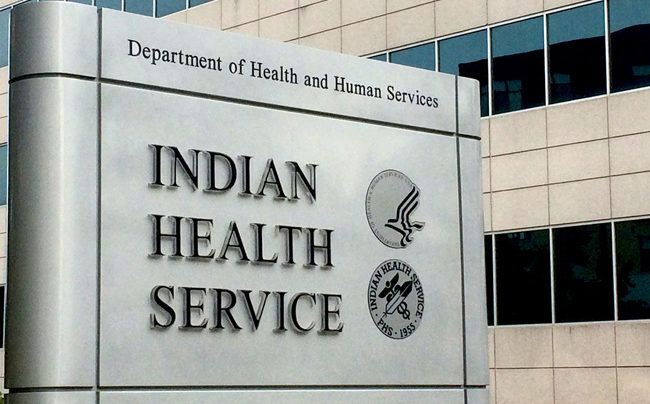WASHINGTON, D.C. – The Indian Health Service (IHS) has announced the appointments of five Senior Executive Service-level (SES) Chief Executive Officer positions at IHS facilities across Indian Country. In 2022, the IHS was allocated 12 additional SES positions to elevate using existing CEO roles at various service units, bringing the total number of SES positions across the agency to 38. The first five of the 12 include:
- Shelly Harris, a member of the Turtle Mountain Band of Chippewa – CEO, Quentin N. Burdick Memorial Health Care Facility, IHS Great Plains Area
- George Valliere, an enrolled member of the Shawnee, Quapaw, and Cherokee Tribes – CEO, Claremore Indian Hospital, IHS Oklahoma City Area
- Cmdr. Daryl Dineyazhe-Toya, an enrolled member of the Navajo Nation – CEO, Crownpoint Service Unit, IHS Navajo Area
- Capt. Katrina Leslie-Puhuyaoma, an enrolled member of the Hopi Tribe – CEO, Shiprock Service Unit, IHS Navajo Area
- Barbara Asher, a member of the Cherokee Nation – CEO, Colorado River Service Unit, IHS Phoenix Area
“Establishing Senior Executive Service-level CEO positions at 12 additional IHS service units will enable parity across the IHS for positions of similar complexity,” said IHS Director Roselyn Tso. “The IHS remains committed to recruiting, developing, and retaining a dedicated, competent, and caring workforce to provide quality care across the Indian health system.”
Elevating CEO positions to the SES level enhances the capacity of the IHS to optimize resources, facilities, oversight, and consistency across the organization. In addition, this will create equity across the IHS to effectively recruit and retain executive-level leadership to manage what is presently an executive-level assignment carried out by a General Schedule grade 15.
Chief Executive Officers, also referred to as Health System Administrators, oversee the successful administration of IHS hospitals and medical centers. These individuals must manage increasingly complex and integrated healthcare, financial, professional, and administrative organizations, and maintain accreditation and certification standards to ensure the highest level of quality care and safety for American Indian and Alaska Native patients. They are also tasked with working and collaborating within a system that overlaps federal, tribal, state and local governments, urban Indian organizations, and tribal communities to accomplish the goals for implementing effective healthcare policies and systems.
CEOs also increasingly interact at an executive level to uphold the special government-to-government relationship between the federal government and tribes to promote the healthcare needs of the populations served. Additionally, CEOs provide technical assistance to tribes and urban Indian organizations to develop and sustain tribal healthcare programs, and to promote collaboration in the development of each IHS service unit’s strategic plan.














































